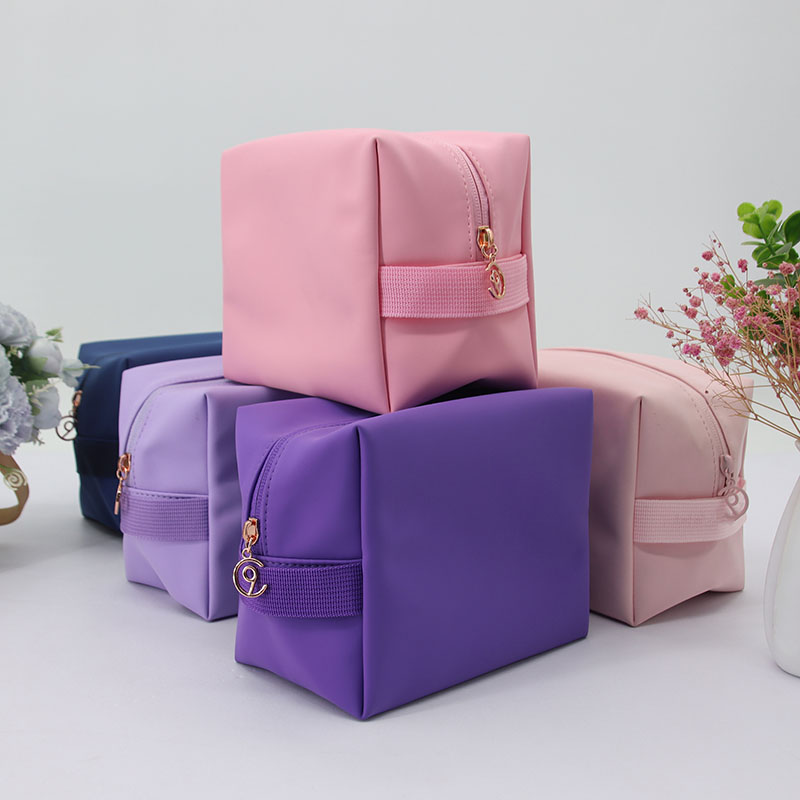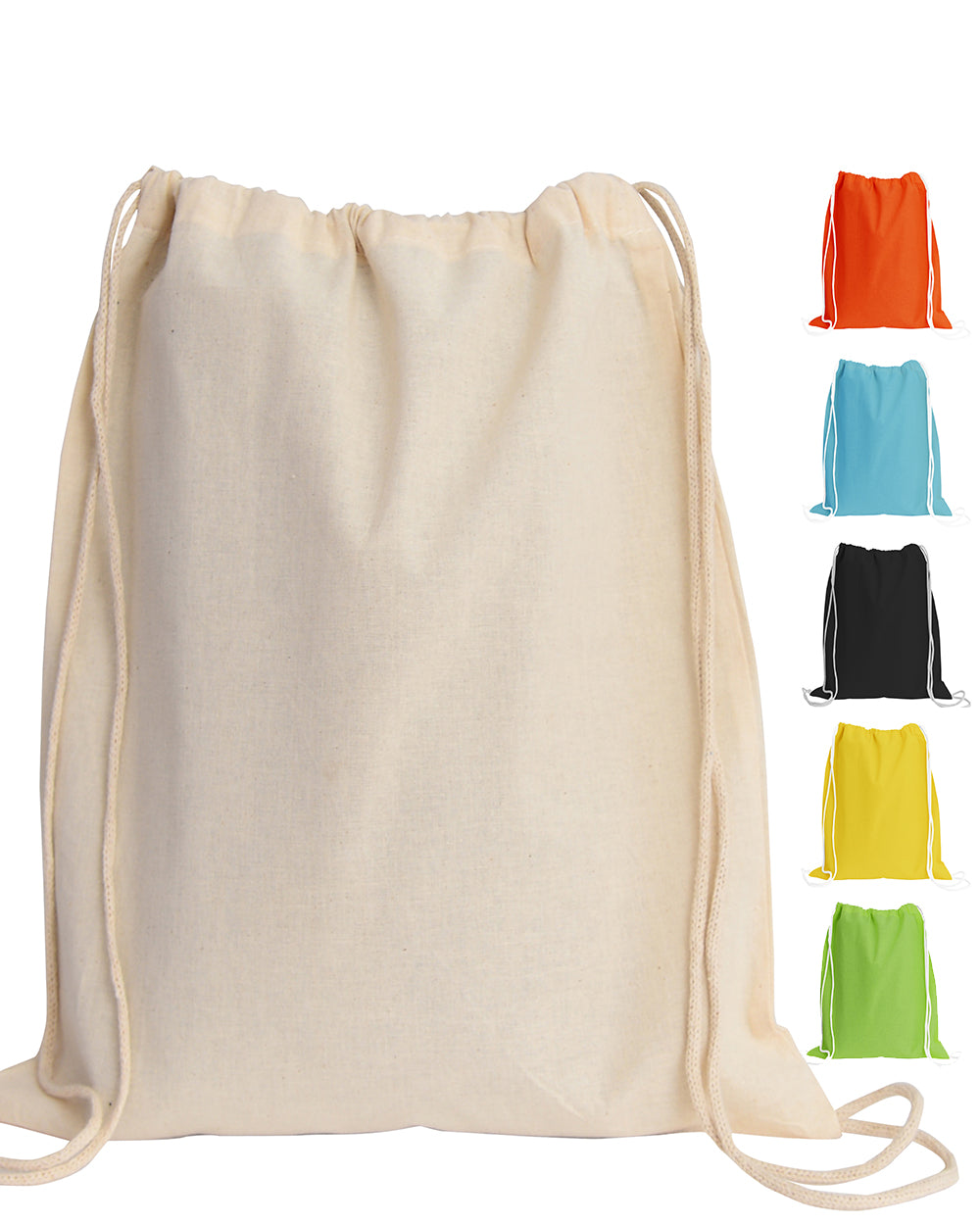Quality metallic leather is defined by its flexible, well-adhered finish on a high-grade base like full-grain hide, ensuring durability and preventing cracks.
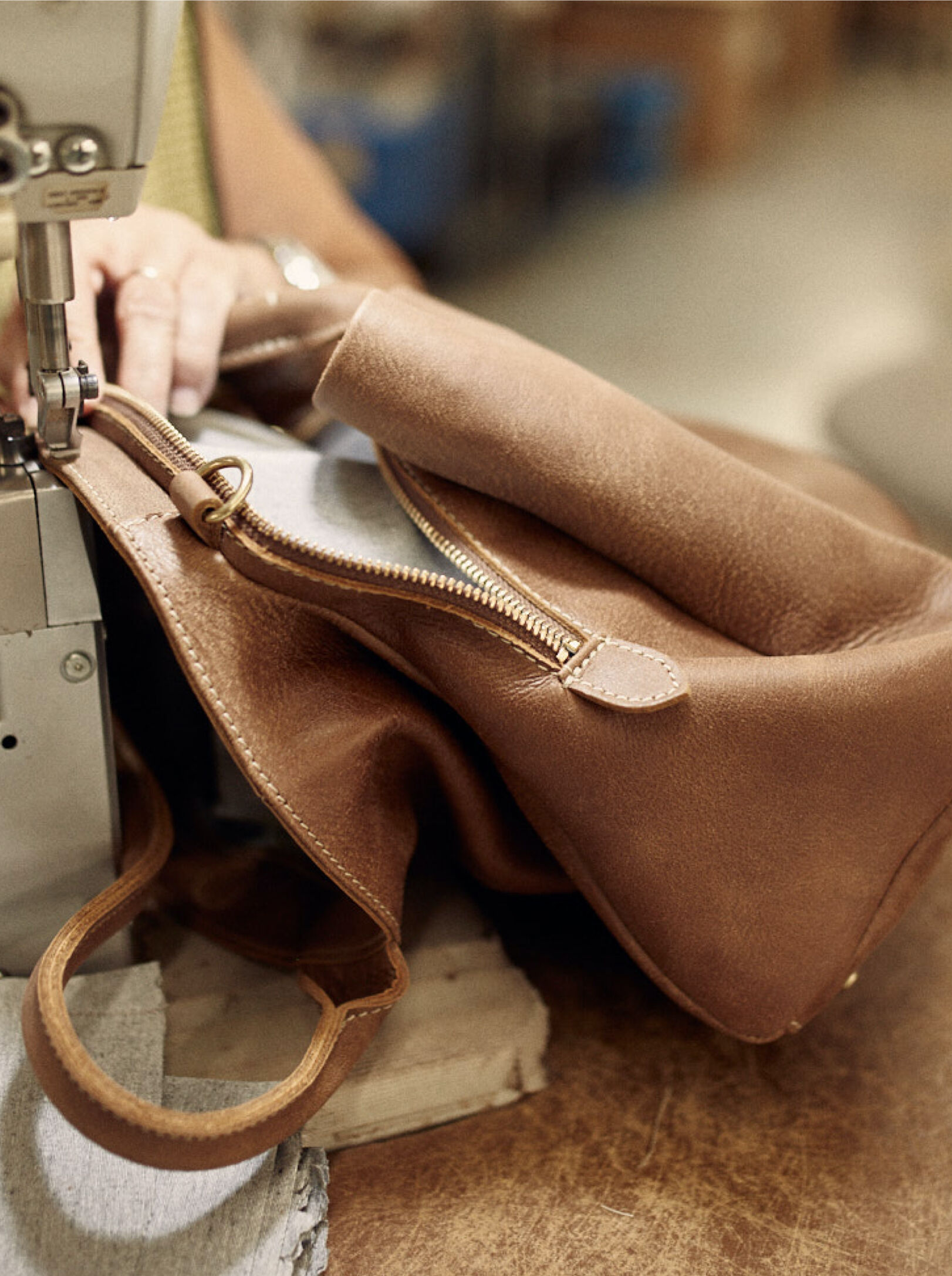
Table of Contents
- Beyond the Shine: What Truly is Metallic Leather?
- The Crafting Process: Secrets of the Shimmer
- The Four Hallmarks of Superior Metallic Leather
- Debunking Common Metallic Leather Misconceptions
- An Artisan’s Approach to Caring for Metallic Leather
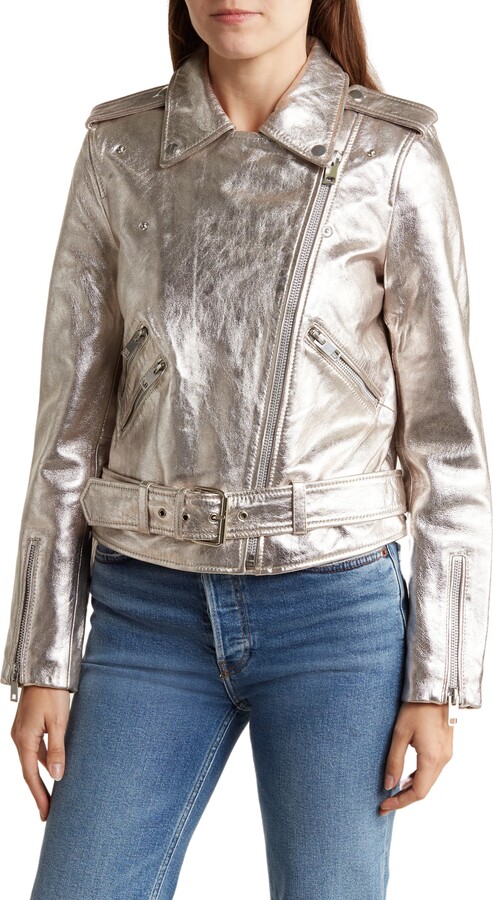
Beyond the Shine: What Truly is Metallic Leather?
Metallic leather is a captivating material that catches the eye with its radiant, light-reflecting surface. It is not a separate type of animal hide, but rather a specialized finish applied to genuine leather. This finish bestows a lustrous, metal-like sheen, transforming a classic material into something bold and contemporary. The process involves bonding a metallic layer to the surface of a prepared hide, creating an effect that can range from a subtle pearlescent glow to a brilliant, high-shine foil.
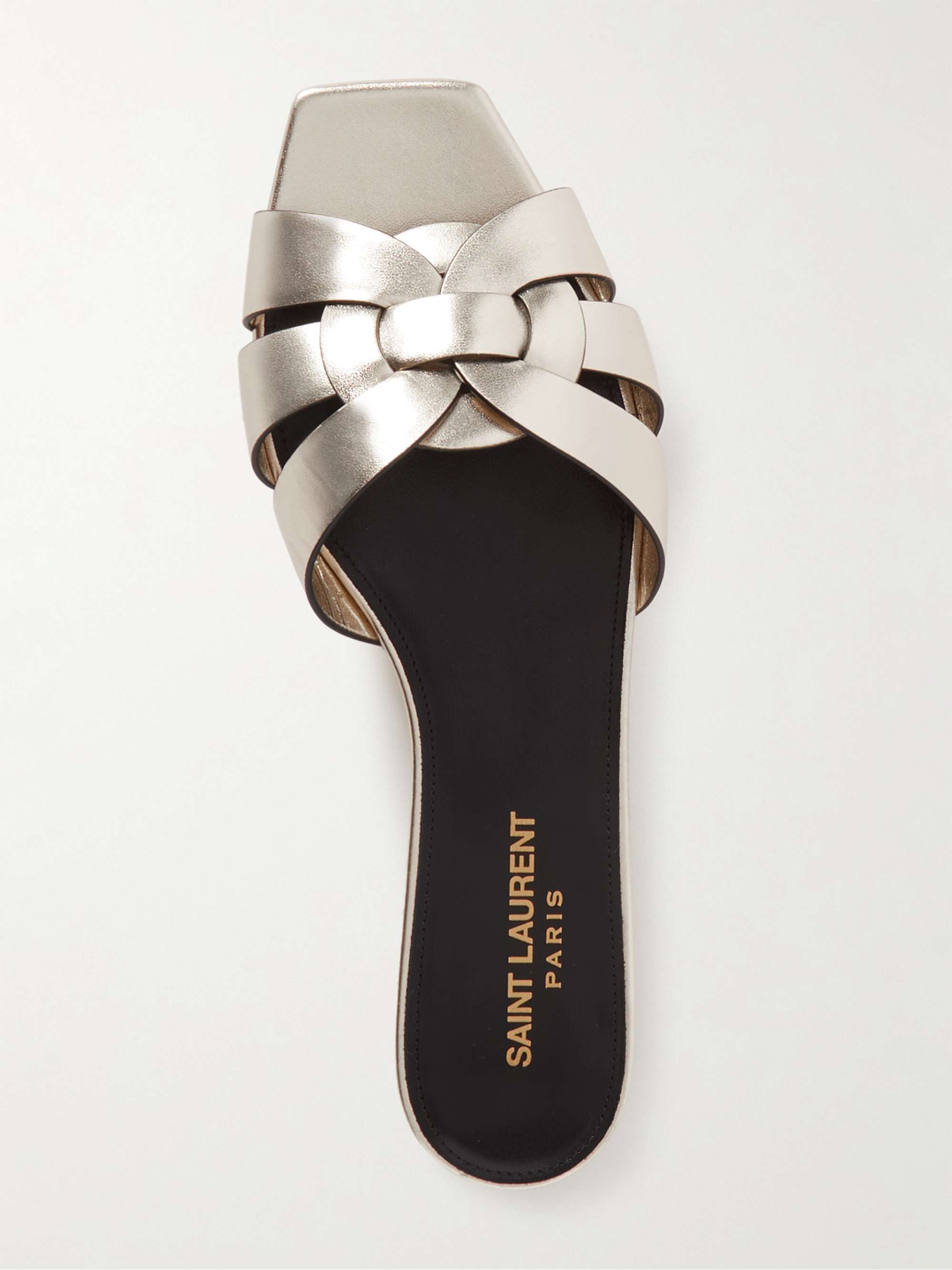
However, the allure of the shimmer often masks the true quality underneath. The term “metallic leather” is broad and can encompass everything from exquisitely crafted full-grain hides with a durable finish to cheap, stiff corrected grains with a coating destined to crack and peel. An expert craftsman understands that the metallic finish is only as good as the foundation it is applied to and the method used to apply it. The real value lies in the interplay between the quality of the base hide and the integrity of the metallic application.
The Crafting Process: Secrets of the Shimmer
How does leather get its metallic glow? The answer lies in two distinct techniques, each with significant implications for the final product’s quality, durability, and feel. Discerning the difference is the first secret to identifying superior craftsmanship.
The Foil Transfer Method: A Delicate Art
The most revered method for creating high-end metallic leather is through foil transfer. This is a multi-step process that demands precision. First, a high-quality leather hide, often full-grain or top-grain, is carefully prepared. A special adhesive is applied to its surface, followed by a very thin sheet of metallic foil. Using a combination of heat and pressure, the metallic layer is permanently bonded to the grain of the leather. The excess foil is then removed, leaving behind a finish that is integrated with the leather’s natural texture.
The result is a material that retains much of the leather’s original softness, flexibility, and breathability. The metallic finish often showcases the hide’s natural grain, adding depth and character. While more costly and complex, this method produces a far more durable and luxurious product that wears beautifully over time.
The Pigmented Finishing Method: A Surface-Level Sheen
A more common and less expensive technique involves using a pigmented finish. In this process, a thick, paint-like coating containing fine metallic particles is sprayed or rolled onto the leather’s surface. This is often done on lower-quality or corrected-grain leathers, as the opaque coating effectively hides imperfections, scars, and blemishes in the hide.
While this method can produce a very uniform and shiny surface, it comes at a cost. The heavy pigment layer sits on top of the leather rather than bonding with it. This creates a stiffer, less breathable material that often feels more like plastic than leather. It is also far more susceptible to cracking, scuffing, and peeling, as the finish does not flex naturally with the hide underneath.
The Four Hallmarks of Superior Metallic Leather
When evaluating a metallic leather good, craftsmen look past the initial dazzle to inspect four critical quality indicators. These are the tell-tale signs that separate a temporary fashion piece from a timeless investment.
The Base Leather: An Unseen Foundation of Strength
The single most important factor is the quality of the base hide. True luxury starts with a superior foundation. A metallic finish applied to a cheap, corrected-grain or bonded leather will never possess the strength or longevity of one applied to full-grain leather. Full-grain leather, derived from the strongest part of the hide, retains its natural markings and dense fiber structure. This provides an ideal canvas for a metallic finish, ensuring the final product is both beautiful and incredibly resilient.
At Beldturaleather, our commitment is to material integrity above all else. We believe that an accessory can only be as good as the hide it is crafted from. That is why our artisans select only premium full-grain leathers for our collections, ensuring every piece, whether classic or metallic, is built to endure and develop character with age.
Finish Adhesion: Resisting Cracks and Peels
How well is the metallic layer attached to the hide? This is a crucial question. On a high-quality piece, the finish should appear fully integrated with the leather’s grain. Gently bend or fold a corner of the material. A poor-quality finish will show signs of stress, micro-cracking, or even a whitish “stretch” mark where the finish is separating from the hide. A superior foil-transferred finish will flex seamlessly with the leather, showing no signs of delamination. Run your fingernail lightly over an inconspicuous area; a cheap finish may flake or scratch off with minimal pressure.
Flexibility and Handfeel: The Suppleness Test
Close your eyes and touch the leather. A premium metallic leather should feel supple and rich, not stiff, boardy, or plastic-like. It should drape and move with the grace of high-quality leather. A product made with a heavily pigmented finish on corrected-grain leather will often feel rigid and cold to the touch. This lack of flexibility is a primary cause of premature cracking, especially at stress points like handles, straps, and corners.
Luster Consistency: The Mark of a Master’s Hand
Examine the surface under good light. A masterful application results in a consistent, even luster across the entire product. There should be no dull spots, streaks, or areas where the finish appears blotchy or uneven. This consistency speaks to a controlled, high-quality production process. While natural variations in the leather grain might create subtle differences in how the light reflects, the metallic finish itself should be uniform and flawless.
Here is a quick reference table to help distinguish quality:
| Quality Indicator | Superior Metallic Leather (Foil Transfer) | Inferior Metallic Leather (Pigmented Finish) |
|---|---|---|
| Base Hide | Full-grain or top-grain; natural texture visible. | Corrected-grain or bonded; surface looks artificial. |
| Flexibility | Supple, soft, and flexible; moves like real leather. | Stiff, rigid, and may feel like plastic. |
| Adhesion Test | Bends without cracking; finish is integrated. | May show micro-cracks or peel when flexed. |
| Feel | Warm and rich to the touch. | Cold and artificial to the touch. |
Debunking Common Metallic Leather Misconceptions
Several myths surround metallic leather, often preventing people from appreciating its potential as a durable and versatile material. It is time to set the record straight.
One common belief is that metallic leather is inherently weak or prone to damage. This is only true for poorly made versions. A high-quality metallic finish on a full-grain base is remarkably resilient and, with proper care, can last as long as its non-metallic counterparts. The key is the quality of the craftsmanship, not the shine of the finish.
Another misconception is that it is a fleeting trend. While it certainly makes a statement, metallic leather in classic tones like gold, silver, bronze, or pewter can function as a “new neutral.” It adds a touch of light and sophistication to an outfit without being overpowering, making it a surprisingly timeless choice for accessories like bags, belts, and wallets.
An Artisan’s Approach to Caring for Metallic Leather
Protecting your investment requires a gentle and informed approach. Aggressive cleaning or improper storage can damage the delicate finish. Follow these craftsman-approved steps to maintain its beauty.
For routine cleaning, a simple dusting with a soft, dry microfiber cloth is usually sufficient. For minor smudges, slightly dampen the cloth with water and wipe gently in one direction. Never use chemical cleaners, saddle soap, or traditional leather conditioners on a metallic finish. These products can contain solvents or waxes that will strip the luster, cause discoloration, or create a cloudy film.
Prevention is the most effective form of care. Avoid prolonged exposure to direct sunlight, which can cause fading. Be mindful of abrasive surfaces that can scratch or scuff the metallic layer. When storing your metallic leather goods, keep them in a breathable dust bag away from heat and humidity. Do not store them in plastic, which can trap moisture and damage the finish over time. By treating it with the same care as any other luxury material, you ensure its shimmer will last for years to come.

